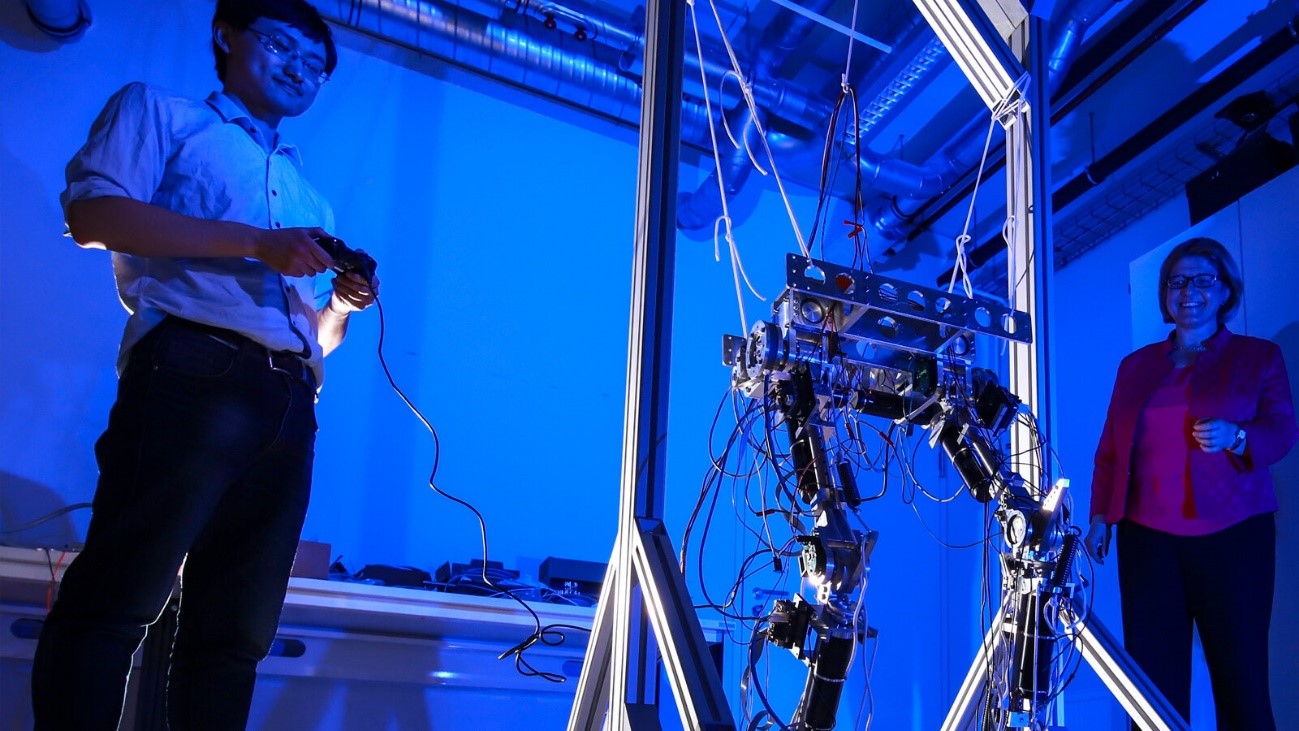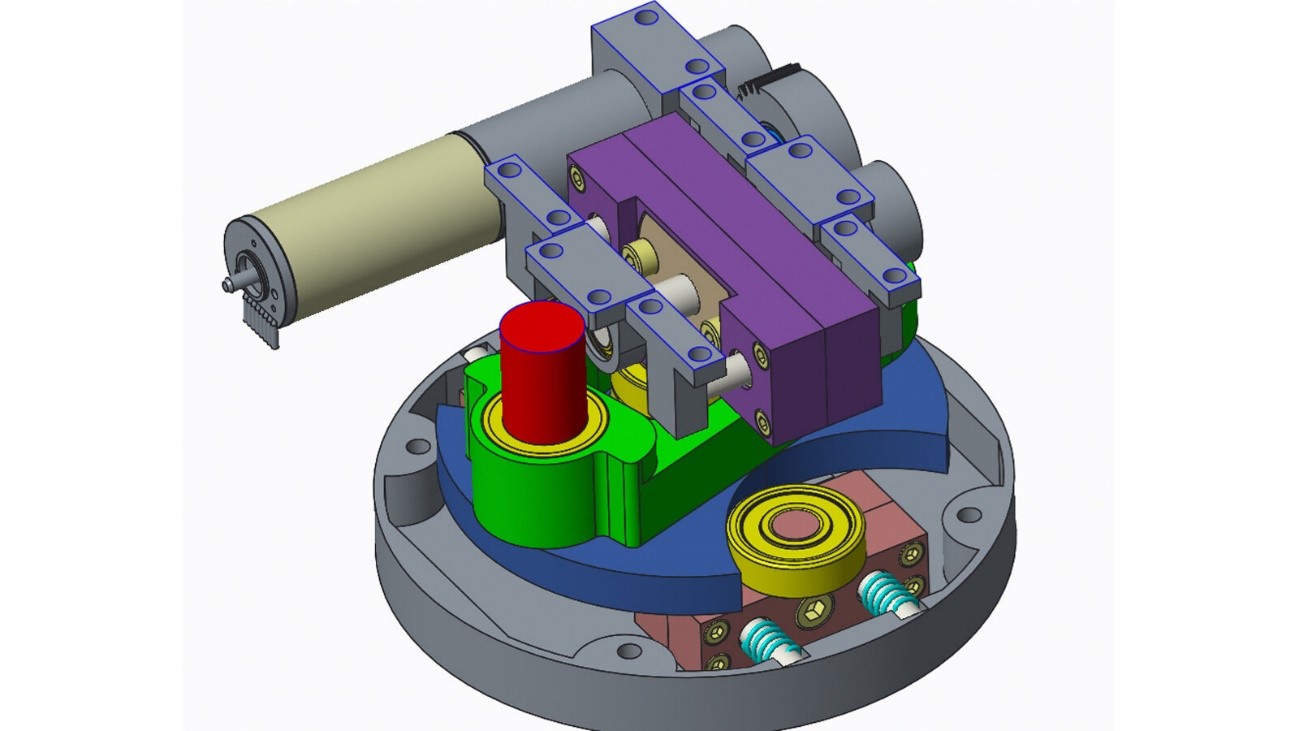Chemnitz Robotics Researchers Invent New Robot Joint
New patent granted to the Professorship of Robotics and Human Machine Interaction (Prof. Dr. Ulrike Thomas) for compliant robot joint - invention will make human-robot interaction safer.
- New joint reduces the risk of injury
- The inventor has been working on this new robot joint since 2016. Previous joints were equipped with sensors, mostly force sensors, in order to measure the contact forces in the event of a collision and to be able to evade them if necessary. Other technologies use external optical sensors and monitor the distance between robot and human. The new joint can absorb energy thanks to a spring. This allows collision energy to flow away and the robot can move faster in the immediate vicinity of a person without endangering them. “With the joint, we have managed to cover a very large area and at the same time offer a compact design for the robot joint,” says Thomas. Another advantage of the flexible joints: The stored energy can also be used to accelerate the movement, so that a humanoid robot can throw or jump balls. Thomas ‘employee Hongxi Zhu then quickly developed the first ideas into functioning prototypes.

Doctoral student Hongxi Zhu and Professor Ulrike Thomas jointly try out the walking robot, in which the compliant robot joint can be integrated. Photo: Jacob Müller

Schematic representation of the patented robot joint: The springs are connected by a cam tech-nology. A small linear motor adjusts the spring hardness of the joint. Graphic: Professorship of Robotics and Human Machine Interaction
